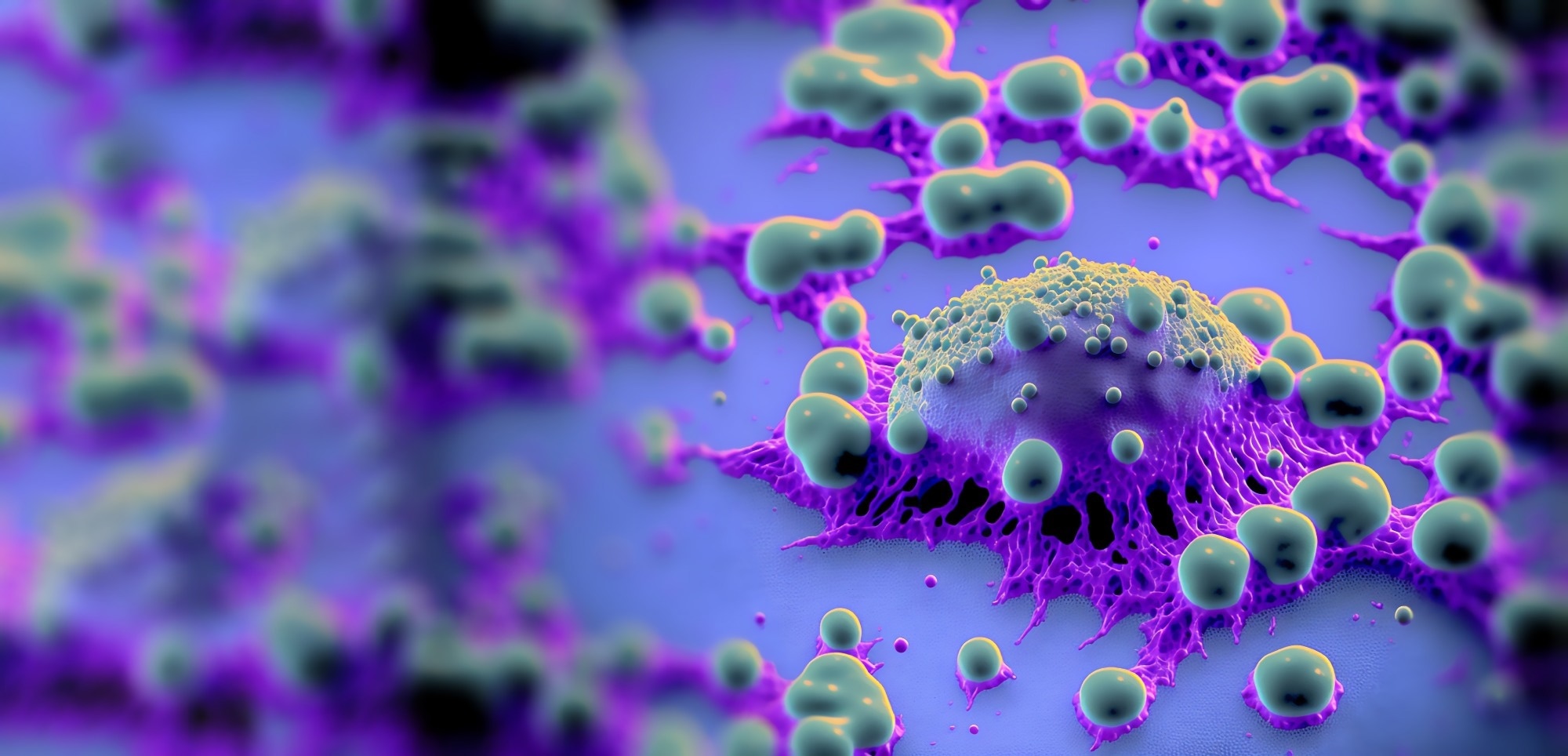In a recent study published in Nature Communications, researchers evaluate the impact of tumor-derived growth and differentiation factor-15 (GDF-15) on leukocyte function-associated antigen 1 (LFA-1)-based T-lymphocyte recruitment and responses to anti-programmed cell death protein-1 (PD-1) immunotherapy.
 Study: Tumor-derived GDF-15 blocks LFA-1 dependent T cell recruitment and suppresses responses to anti-PD-1 treatment. Image Credit: CI Photos / Shutterstock.com
Study: Tumor-derived GDF-15 blocks LFA-1 dependent T cell recruitment and suppresses responses to anti-PD-1 treatment. Image Credit: CI Photos / Shutterstock.com
About the study
Tumor therapy is capable of eliciting effective responses in advanced and metastatic cancer patients; however, a significant percentage of cancer patients do not respond to these treatments. GDF-15, a transforming growth factor beta cytokine, has anti-inflammatory effects and is over-expressed in tumor secretomes, which are correlated with poor survival, the absence of T-cell infiltrates, and impaired T-cell priming.
The current study involved the production of recombinant GDF-15 in human embryonic kidney (HEK) 293T cells and the development of an anti-human GDF-15 antibody in C57BL/6J GDF-15-/- mice. The antibody was validated for binding affinity by surface plasmon resonance (SPR), whereas specificity was evaluated by tissue cross-reactivity studies. The experiments involved the inoculation of MC38 colon tumor cells, Panc02 pancreatic cancer cells, and murine EMT6 breast cancer cells in C57BL mice.
In mice, tumor growth was monitored using bioluminescence imaging. Tumor-bearing mice were treated with an anti-GDF-15 and anti-PD-1/anti-GDF-15 intraperitoneally.
Flow cytometry was performed to analyze tumor-infiltrating T-lymphocytes. Human tumor-infiltrating immune cells were analyzed using anti-GDF-15- treated humanized mice.
Eighty-six patients with histologically confirmed oropharyngeal squamous cell carcinoma were also included in the study. Additionally, surplus sera were obtained at the initiation of ipilimumab therapy from 37 patients with stage IV melanoma, as well as 34 patients with melanoma at the initiation of pembrolizumab therapy.
Surplus sera was also obtained from 88 melanoma patients with a median age of 62 years at the baseline of anti-PD-1 treatment. More specifically, 48 and 40 patients received pembrolizumab and nivolumab, respectively. A pan-cancer analysis of GDF-15 expression was performed based on gene expression profiles and ribonucleic acid (RNA) sequencing data.
Rolling and transmigration assays were also performed. Heparinized blood was obtained from healthy individuals and mixed with C-X-C motif ligand (CXCL)12α and GDF-15. Endothelial cells were also collected and activated with tumor necrosis factor-alpha (TNF-α) and interferon-gamma (IFN-γ) cytokines.
Furthermore, ligand-complex-based binding assays and monoclonal antibody 24 (mAb24) anti-active LFA-1 conformation-specific staining were performed, followed by dSTORM super-resolution microscopy for analysis of active and inactive LFA-1.
Bead-based adhesion signaling assay and immunohistochemistry (IHC) were performed, followed by quantitative reverse transcription-polymerase chain reaction (qRT-PCR) to determine Glial Cell Line-Derived Neurotrophic Factor Family Receptor Alpha-like (GFRAL) messenger RNA (mRNA) expression. Human and murine GDF-15 levels were measured in serum or cell culture using enzyme-linked immunosorbent assays (ELISA).
Study findings
GDF-15 decreased T-lymphocyte LFA-1/2-integrin-regulated adhesion to activated-type endothelial cells, a procedure that is essential for T lymphocyte extravasation. Notably, GDF-15 serological levels have been associated with PD-1 immunological checkpoint inhibition therapy failure in melanoma patients. GDF-15 inhibition increased both T-lymphocyte trafficking and treatment efficacy in mouse tumor models.
In addition to its established role in malignancy-associated cachexia and anorexia, GDF-15 appears to be a mediator of T-cell extravasation into tumor microenvironments, thus providing more justification for the development of therapeutic antibodies against GDF-15. Tumor-derived GDF-15 inhibited the LFA-1/intercellular adhesion molecule 1 (ICAM-1) axis in T-cells and T-cell migration into tumors.
GDF-15 inhibited the adhesion of human T-cells to activated endothelial cells, interfered with LFA-1-dependent adhesion to immobilized ICAM-1, and broadly affected T-cell adhesion to endothelial cells. Moreover, GDF-15 expression inhibited immunological infiltration in humanized and syngeneic tumor models in vivo.
GDF-15 inhibition increased T-cell trafficking to tumor-draining lymphatic nodules, thereby interfering with mouse responsiveness to anti-PD-1 immunotherapy. In humanized and syngeneic immunocompetent mice models, antibody-based GDF-15 neutralization validated the therapeutic capability of targeting GDF-15.
Blocking tests revealed that these effects were due to GDF-15, rather than contaminating tumor growth factor-beta (TGF-β), which is commonly detected in preparations of GDF-15. The absence of a link between serological GDF-15 levels and early responses to cytotoxic T-lymphocyte-associated protein 4 (CTLA-4) blocking indicated that agents targeting CTLA-4 might overcome the immune-inhibitory actions of GDF-15. Only melanoma patients who exhibited low GDF-15 expression in their response to ipilimumab treatment had sustained responses and survival of more than one year.
Conclusions
Long-term protective cytotoxic [cluster of differentiation 8+ (CD8+)] T-lymphocyte memory requires initial T-lymphocyte priming, followed by LFA-1-based signals supplied through secondary synaptic circuitry during key differentiation stages. The effects of GDF-15 on T-cells provide a molecular basis for T-cell exclusion from GDF-15-expressing tumors and for targeting GDF-15.
Thus, GDF-15 is a potential and actionable novel target for cancer immunotherapy, as it is overexpressed in more than 50% of all solid tumors. GDF-15 may also serve as a prognostic biomarker for immune checkpoint blockade failure.